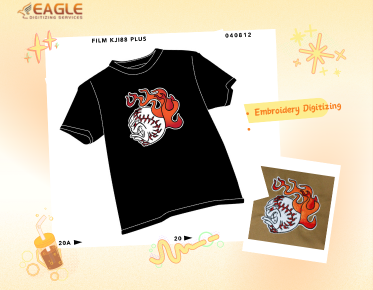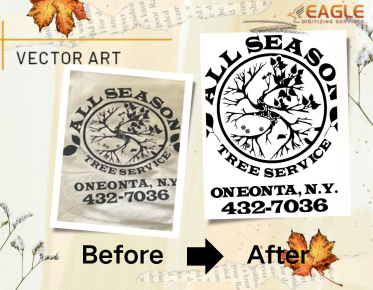Asset Mastery: Creating and Using Vector Art in Style
Vector art assets are digital illustrations created using mathematical formulas to define shapes, lines, and colors. Unlike pixel-based images, vector graphics maintain their clarity and detail regardless of scaling. This scalability makes them perfect for a variety of applications, from tiny icons to giant billboards. Read Here are Some Crucial Aspects That You Ought to Know About vector artwork service!
The Benefits of Using Vector Art in Design Projects
The primary advantage of vector art lies in its resolution independence. Since the graphics are defined by paths rather than pixels, they can be resized without losing quality. This flexibility makes vector art ideal for designs that need to be scaled for different mediums, ensuring crisp, professional results every time. Additionally, vectors tend to have smaller file sizes compared to raster images, which can be beneficial for web performance.
Getting Started with Vector Art Creation
Choosing the Right Software for Vector Design
Selecting the appropriate software is crucial for creating high-quality vector art. Popular options include Adobe Illustrator, CorelDRAW, and Inkscape. Each program offers unique features and tools tailored for vector design. Adobe Illustrator, for example, is renowned for its comprehensive toolset and industry-standard capabilities, while Inkscape provides a powerful, free alternative with extensive functionality.
Basic Tools and Techniques for Creating Vector Art
To start creating vector art, familiarize yourself with fundamental tools such as the Pen Tool, Shape Tools, and Pathfinder options. The Pen Tool allows for precise drawing and editing of paths, while Shape Tools help create basic geometric forms. Pathfinder tools are essential for combining or subtracting shapes to create complex designs. Mastering these tools will enable you to craft detailed and dynamic vector artwork.
Understanding Paths, Anchors, and Bezier Curves
Vector graphics rely on paths and anchors to define shapes. Paths are lines that can be straight or curved, and anchors are points that define the start and end of these lines. Bezier curves, created using anchor points and control handles, are instrumental for creating smooth, flowing curves in vector art. Understanding these concepts is key to achieving fluid and accurate designs.
Designing Your Vector Art Assets
Tips for Creating Scalable and Versatile Assets
When designing vector assets, focus on creating elements that are versatile and adaptable. Use simple shapes and avoid excessive detail that might not scale well. Incorporate modular design principles, allowing components to be reused or modified as needed. This approach ensures that your assets maintain their quality and functionality across different applications.
Incorporating Branding Elements into Your Designs
Integrate branding elements such as logos, color schemes, and fonts into your vector art to ensure consistency with your brand identity. This alignment helps reinforce brand recognition and creates a cohesive visual presence. Be mindful of brand guidelines when incorporating these elements to maintain the integrity of your design.
Balancing Aesthetics and Functionality in Your Art
Effective vector art balances visual appeal with practicality. While aesthetic considerations are important, ensure that your designs are functional and serve their intended purpose. Consider how the artwork will be used, whether for web icons, print materials, or app interfaces and adjust the design accordingly to meet both aesthetic and functional requirements.
Color and Style Choices
Selecting Color Palettes for Effective Vector Art
Choose color palettes that enhance the visual impact of your vector art while remaining harmonious and accessible. Utilize color theory principles to create contrast and emphasis, ensuring that your designs are visually engaging and easy to understand. Tools like Adobe Color or Coolors can help in selecting and coordinating colors.
Applying Gradients and Patterns for Visual Interest
Incorporate gradients and patterns to add depth and texture to your vector designs. Gradients can provide a sense of dimension and richness, while patterns can add intricate details and visual interest. Use these elements sparingly to avoid overwhelming the design, and ensure they align with the overall aesthetic.
Maintaining Consistency with Styles and Themes
Consistency in style and theme is crucial for creating a cohesive visual identity. Define a set of design guidelines, including color schemes, fonts, and graphic styles, and adhere to them across all vector assets. This consistency helps create a unified look and feel, making your designs more recognizable and professional.
Building a Library of Vector Art Assets
Organizing Your Assets for Easy Access
Create a structured library for your vector art assets to streamline access and management. Use folders and subfolders to categorize assets based on their type, project, or usage. This organization will save time and reduce frustration when searching for specific elements.
Categorizing and Tagging Your Vector Files
Implement a system for categorizing and tagging vector files to enhance searchability. Tags can include keywords related to design elements, themes, or project types. This system will help you quickly locate and retrieve assets, improving workflow efficiency.
Creating Templates for Repeated Use
Develop templates for commonly used design elements to ensure consistency and save time. Templates can include layouts, color schemes, and design patterns that can be easily adapted for different projects. This practice not only speeds up the design process but also maintains uniformity across your work.
Optimizing Vector Art for Different Uses
Preparing Assets for Print vs. Digital Media
Different media require different preparation methods. For print, ensure your vector art is set to the correct resolution and color mode (typically CMYK). For digital use, focus on optimizing file sizes and ensuring compatibility with web standards. Adjustments may include exporting to appropriate file formats and adjusting color profiles.
Exporting Vector Art in Various File Formats
Export vector art in formats suited to its intended use. Common formats include SVG for web, EPS for print, and PDF for versatile applications. Ensure that the chosen format retains quality and is compatible with the software and platforms where the artwork will be used.
Tips for Ensuring Compatibility Across Software
To ensure compatibility, use widely accepted file formats and avoid software-specific features that may not translate across different platforms. Test your vector art in various programs to verify that it appears as intended. Regularly updating your software and understanding the capabilities of different programs will also help maintain compatibility.
Using Vector Art Assets in Projects
Integrating Vector Art into Web and Mobile Designs
When incorporating vector art into web and mobile designs, consider how it will scale and interact with other elements. Ensure that your vector assets are optimized for different screen sizes and resolutions. Use responsive design techniques to adapt the artwork to various devices and interfaces.
Incorporating Assets into Marketing Materials
Vector art is versatile and can enhance marketing materials such as brochures, social media graphics, and advertisements. Ensure that the artwork aligns with your branding and effectively communicates your message. Use high-quality exports to maintain visual integrity across different formats.
Best Practices for Combining Vector Art with Other Design Elements
Combine vector art with other design elements such as text, photos, and UI components carefully. Ensure that the vector assets complement and enhance the overall design rather than overpowering it. Use alignment, spacing, and layering techniques to create a harmonious and visually appealing composition.
Managing and Updating Your Asset Library
Strategies for Keeping Your Asset Library Organized
Maintain an organized asset library by regularly reviewing and updating your files. Implement a consistent naming convention and folder structure to keep everything easily accessible. Regularly purge outdated or unused assets to keep the library streamlined and manageable.
Updating and Revising Assets as Design Trends Evolve
Design trends change, and so should your asset library. Periodically review and update your vector art to reflect current trends and styles. Revise outdated elements and incorporate new techniques to keep your designs fresh and relevant.
Handling Version Control and File Management
Implement a version control system to manage changes and updates to your vector art assets. Keep track of different versions and revisions to avoid confusion and ensure that you are working with the most current files. Use cloud-based storage solutions for secure and accessible file management.
Collaborating with Vector Art Assets
Sharing Vector Art with Team Members and Clients
When sharing vector art, ensure that files are in compatible formats and include all necessary elements. Use collaborative platforms and file-sharing services to facilitate smooth communication and file exchange. Provide clear instructions and guidelines to ensure that recipients can use the assets effectively.
Ensuring Proper File Formats and Compatibility
Verify that the file formats you use are compatible with the software and systems of your team members and clients. Provide assets in multiple formats if necessary to accommodate different needs. Communicate any specific requirements or settings needed for proper integration.
Tips for Collaborating on Design Projects Efficiently
Establish clear communication channels and project management tools to streamline collaboration. Define roles and responsibilities, and set deadlines to keep the project on track. Regularly check in with team members to address any issues and ensure that everyone is aligned with the project goals.
Troubleshooting Common Issues
Fixing Problems with File Corruption and Compatibility
File corruption can occur due to various reasons, such as software glitches or improper saving. If you encounter compatibility issues, try converting the file to a different format or using repair tools. Regularly back up your files to prevent loss and ensure that you have access to previous versions if needed.
Addressing Issues with Scaling and Resolution
Scaling problems can arise if the vector art is not set up correctly. Ensure that your vector paths and shapes are properly defined and avoid excessive detail that may cause issues when scaling. Check resolution settings and export files in appropriate formats for the intended use.
Solutions for Color and Export Problems
Color discrepancies can occur due to differences in color profiles or export settings. Ensure that you are using the correct color mode (RGB for digital, CMYK for print) and adjust export settings to match the intended output. Test your exported files to verify that colors appear as expected. For the excellent online vector conversion, have no qualms about getting in touch with us.
Continuously seek opportunities to improve your vector art skills and explore new techniques. Experiment with different styles, tools, and methods to keep your designs fresh and innovative. Embrace feedback and use it as a chance to grow and refine your craft.



